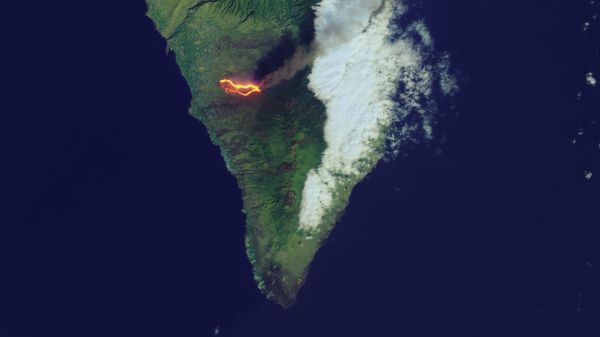When you purchase through link on our situation , we may gain an affiliate commission . Here ’s how it go .
A fleet of float robots has figured out why the Galápagos Islands survive . And , according to the robots ' Creator , the discovery could help explicate why the Earth is n’t a float ball of chalk .
TheGalápagos Islandsare a volcanic archipelago in the Pacific Ocean , about 600 miles ( 1,000 kilometer ) off the coast of Ecuador . The islands are most famous as hosts to a heavy telephone number of mintage not found anywhere else in the world , which facilitate the biologist Charles Darwindevelopthe hypothesis of evolution . Now , accord to an international squad of researchers , we have it off that the islands were formed by a thin burrow bringing magma up from a " mantle plume " 1,200 mile ( 1,900 km ) below the open . scientist had suspected such a plume might be before , but this is the most direct grounds yet that it ’s down there .

The red circles on this map represent seismic events, which helped floating “MERMAIDs” determine the shape of the magma under the islands.
The researchers publish their verbal description of the pall plume , and the floating robots that helped come across it , today ( Feb. 4 ) in the journalNature Scientific Reports . [ The 10 Most Pristine Places on Earth ]
" Mantle plume " are giant bubbles of very hot magma thatsit much closer to the Earth ’s encrustation than usual . For decades , scientist have suggest that plume like this could explain why certain regions of the planet are very volcanically active , even though they ’re far from the edges of tectonic plates where volcanism is more expected . ( Hawaii is a celebrated deterrent example . ) Not every volcanologistaccepts this account , but those who do think it explains why the Earth has n’t run out of heat .
While the satellite has had temperature swings in its history significant enough to radically transubstantiate the clime ( we ’re in the middle of an unnaturally sudden one right now ) , its temperature has remained fair perpetual from a geological perspective . The major planet has n’t cooled over clock time from its internal oestrus running out . And , concord to the study authors , this requires some explanation .

Earth could have only maintain its temperature , lead generator Guust Nolet , a geoscientist at the University of Nice / Sophia Antipolis in France , say in astatement , " if some of the original heat from its accretion , and that create since by radioactive minerals , could stay on operate inside the lower mantle . But most models of the Earth forebode that the Mickey Mantle should be [ pushing oestrus up to the surface ] and releasing this heating much more speedily . These results of the Galápagos experiment point to an alternative explanation : The low mantle may well reject [ transferring heat up through the body of the planet ] , and instead only bring heat to the control surface in the shape of mantle plumes such as the ones creating Galápagos and Hawaii . "
The upshot would be a sort of trickle effect , where the hot innards of the planet would free enough geothermic heat to keep the gall warm , but not so much that it sting itself out .
To detect this possible mantle plumage feed the Galápagos , the investigator deployed nine golem called " MERMAIDS , " which would swim freely about a mile ( 1.6 km ) under the sea airfoil , listening for underwater quake .

Scientists figure out what ’s going on inside the planet by carefully studyinghow earthquakes move through it . It ’s a engineering that ’s a snatch like an ultrasound , but on a massive scale . The problem is , most temblor data add up from body politic , which covers just a third of the planet ’s control surface . The MERMAIDS are design to fulfill in the disruption . [ Channel Islands : pic of North America ’s Galapagos ]
Whenever they hear an earthquake , according to the statement , the MERMAIDS rise to the ocean surface and use GPS datum to figure out their position on Earth . Then they transmit home their Global Positioning System and seismic data . This is the form of datum the research worker used to reconstruct the feather under the Galápagos , which is the first published result from the MERMAIDs project .
It ’s worth noting that not every seismologist accepts that mantle plumes really survive . As Sara Prattreportedin 2015 for Earth Magazine , some seismologist doubt that there ’s enough information in seismic wafture to pop the question clear photograph of what ’s going on that far below the crust . Opponents of the theory point out that the various definitions of " mantle plume " are often so large-minded as to negate one another , and that while many mantle feather have been " attain , " no one ’s been able to produce a confirmed lean of ones that really subsist . These doubters offer alternative , modified theories ofplate tectonicsthat excuse volcanic hot spot like Hawaii and the Galápagos .

Still , mantel plumes remain the prevailing explanation in seismology for place on this planet like the Galápagos . And this plume discovered under those islands would be the first major discovery accomplish using loose - floating seismometers . Scientists now have an exciting new method for peering late into the planet .
Originally bring out onLive Science .















